lens and distance from subject for head shots
Dec 2, 2022 15:55:11 #
User ID wrote:
And the replies continue to be quite off-topic. OP never said "portrait" cuz he never meant that. Yet every Hawgster finds this thread to be their excuse to publicly fantasize that they are actually capable "portraitistes". Puuuuure UHH.
The casual heads as below are more typical of the OPs real intentions but acoarst in *his* personal style. There arent any "portrait rules" on display.
The casual heads as below are more typical of the OPs real intentions but acoarst in *his* personal style. There arent any "portrait rules" on display.
Beautiful character shots ⭐⭐⭐⭐
Dec 2, 2022 19:59:49 #
EJMcD wrote:
I often enjoy your thoughtful input and I'm with you..the 105mm rules.
I had a Nikkor 105mm f/2.5 AI lens many years ago. It was great for portraits. But so is an 85mm or 85 equivalent on other platforms. The 135 is just a tad long, perhaps. But I've made "head shots" with zoom lenses throughout the range of 85 to 200mm FFE (full frame equivalent). The longer someone's nose or whole face, the longer the lens I want to put some distance between us and flatten the perspective.
OTOH, a 24mm FFE can be used to comic effect. However, the subject may not like it! There is a bank commercial here in NC where the ad agency photographer used a *very* wide angle lens. The ad features several talking heads from the bank... They all look extremely odd! I can't hear what they're saying for the weirdness of their appearance! It almost triggers a gag reflex.
Dec 3, 2022 13:19:22 #
lrm wrote:
What is you preferred lens (mm) for head shots. And, what distance from subject is best for headshots using your favorite lens
With 35 mm or full frame digital I start about 12 to 15 focal lengths from the subject and adjust slightly as needed. With a 100 mm (4”) lens that would put 48” to 60”or four to 5 feet of space between photographer and subject. With an 85 mm, a bit closer.
With other formats the lenses change, but the footprint stays pretty similar. For example, with 4x5 camera and a 3-1/4” polaroid back, the film is about 3 times wider than 35 mm, so I’d use a 240 mm lens, instead of an 85. Other people might choose a longer lens. 270 mm and 300 mm soft focus lenses were popular. Alas, while those lenses survive, they don’t show their merits on smaller format sensors.
Dec 3, 2022 13:37:14 #
MrPhotog wrote:
With 35 mm or full frame digital I start about 12 ... (show quote)
Portraiture? Alas ... thaz a bit off topic.
But regardless, most Hogsters ignore a post with basic arithmetic woven into it, so its DOA anywho.
Your math is acoarst correct, and Ive no doubt that the OP will bag many great heads from 4 to 8ft away with his 85mm lens. 4ft per your math and up to about 8ft through the magic ignored by your formula: Cropping :-)
Dec 3, 2022 18:30:38 #
"...What is you preferred lens (mm) for head shots..." lrm actually whatever works for any given scenario albeit it's always to meet and/or exceed client expectations.
In my estimation/experience what matters most is how well you bond with the talent, and how competent your full team is in achieving the desired narrative. I'm only one player in the mix and my greatest challenge is typically illumination, certainly not lens choice or focal length/distance.
btw, over the past decades I've shot everything from 50mm to 500mm for actor & model's Zed cards...
Same with Lifestyle; Beauty and Fashion Editorials. They all seem to work fine for me.
Hope this helps lrm, all the best on your photographic journey...
In my estimation/experience what matters most is how well you bond with the talent, and how competent your full team is in achieving the desired narrative. I'm only one player in the mix and my greatest challenge is typically illumination, certainly not lens choice or focal length/distance.
btw, over the past decades I've shot everything from 50mm to 500mm for actor & model's Zed cards...
Same with Lifestyle; Beauty and Fashion Editorials. They all seem to work fine for me.
Hope this helps lrm, all the best on your photographic journey...

460mm (AF-S 200-500mm f/5.6E ED VR) Image for the MUA's book
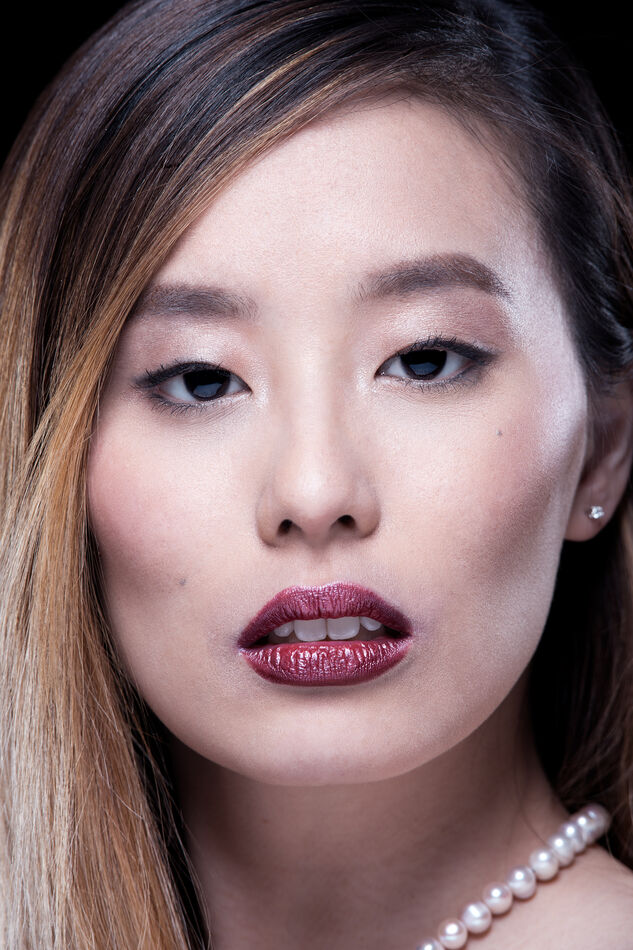
(Download)
290mm (AF-S 200-400mm f/4G IF ED VR) Image for the Nail Tech's book
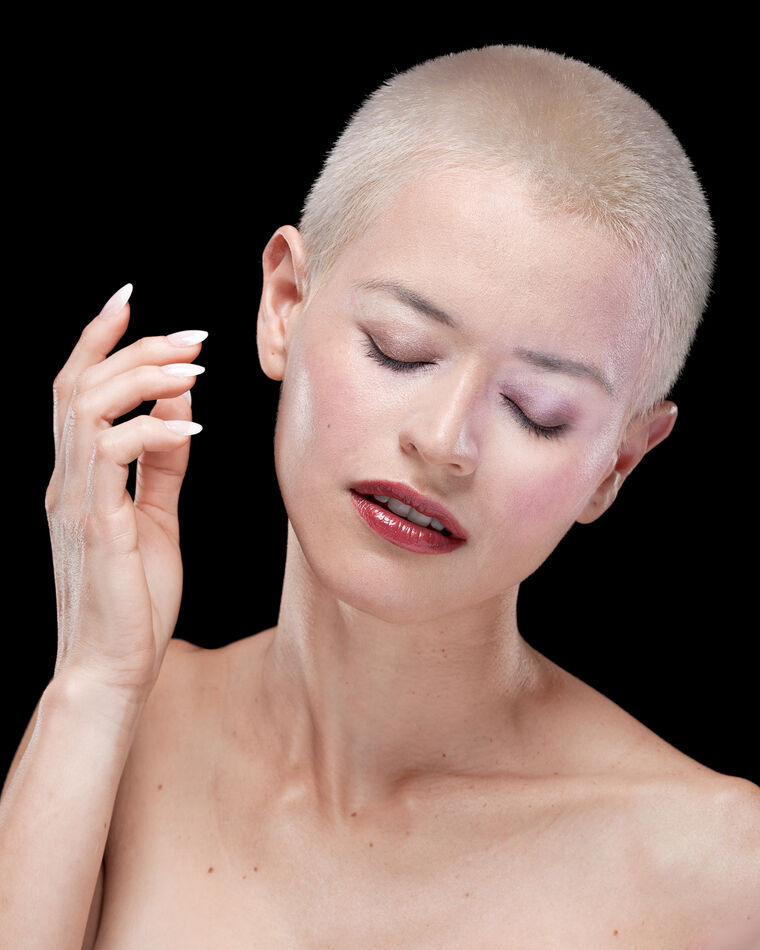
(Download)
240mm (AF-S 200-400mm f/4G IF ED VR) Image for the Wardrobe Stylist's book
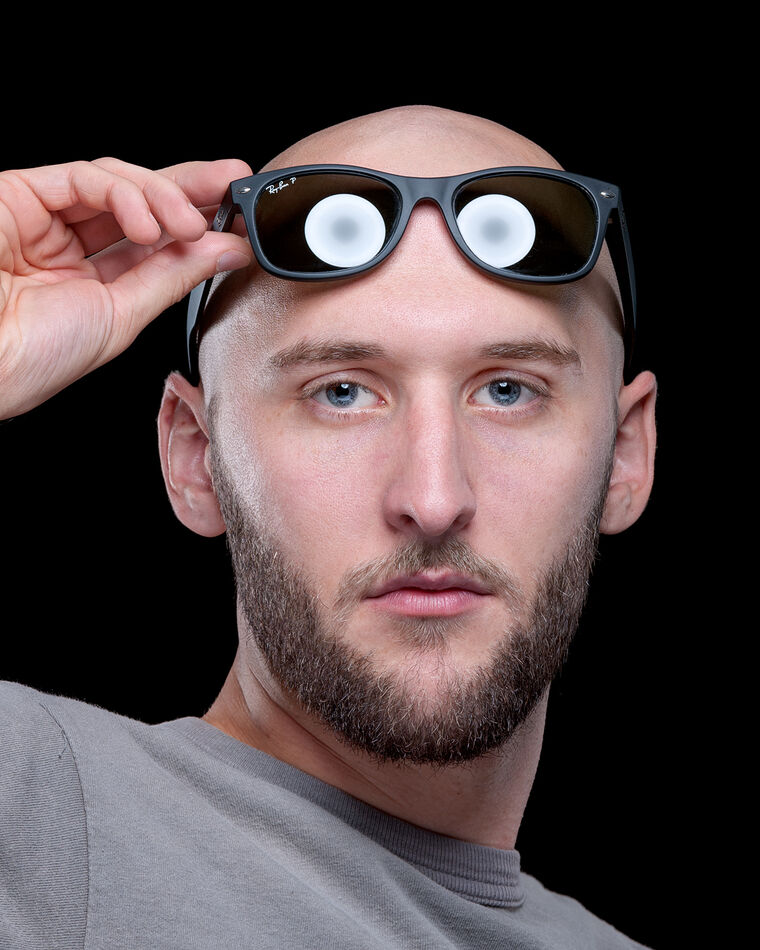
(Download)
200mm (AF-S 200-400mm f/4G IF ED VR) Image for the Hair Stylist's book
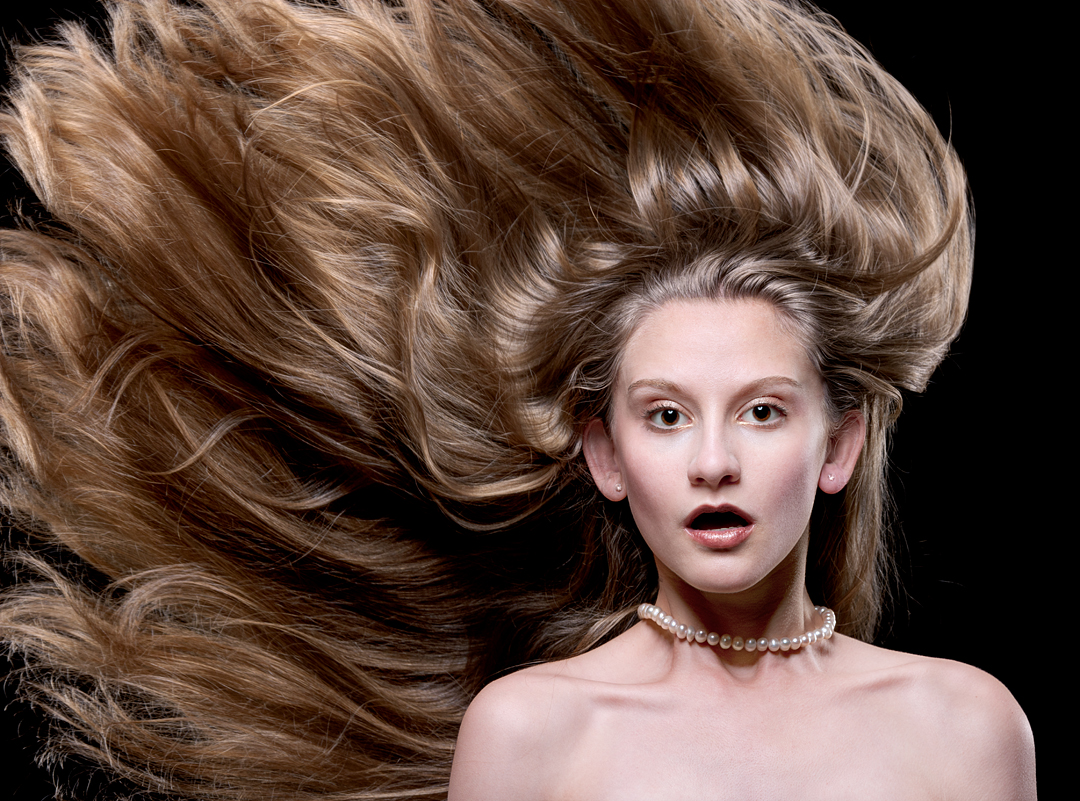
85mm (AF-S 85mm f/1.8G prime) Image for the Photographer's book :)
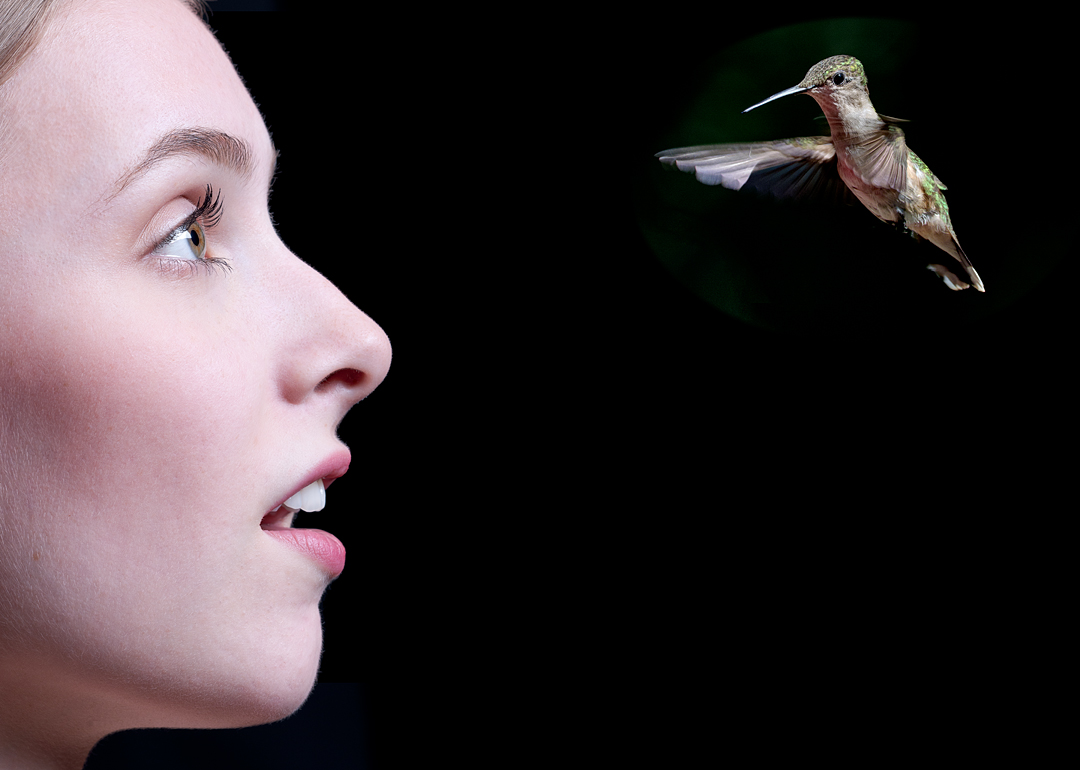
Dec 3, 2022 20:25:39 #
For those interested inthe semantics, this is a description of headshots issued to photographers by the union representing actors
"A head shot or headshot is a modern portrait in which the focus is on the person. The term is applied usually to professional profile images on social media, images used on online dating profiles, the 'about us page of a corporate website, and promotional pictures of actors, models, and authors.
In theater, film, and television, actors, models, singers, and other entertainers are often required to include a headshot, along with their résumé, when applying for a job. Those headshots are intended for helping them land a career, an actor's headshot should help casting directors to understand the person exactly as he or she is (i.e., age group & ethnic background), while the actor hopes that the headshot will inspire the casting director to hire him or her. Headshots often feature the actor or actress facing off-center. A performer will often have headshots expressing different poses and expressions to give a potential employer an idea of the subject's range of appearances or expressions. These types of headshots are called "looks". It is common for an actor to have different headshots for different roles, but for the most part, these consist of a change in attire. The head shots that include a person's shoulders are called "three-quarter" shots. Previously, headshots were often in black and white; however, most headshots are now taken in color.
Actors' headshots, when they are printed and not simply uploaded online to an industry database, are done in an 8"×10" format. Other promotional images, for example, press shots and lobby prints, maybe in many different aspect ratios. Acting headshots are often not photographic prints, instead, they are typically printed via a lithographic or laser process.
The main purpose of an actor's headshot is identification. Therefore, the most important feature of an actor's headshot is that it represents the subject. Theatrical headshots are usually very "neutral" looking shots of the actor and clearly show their facial features.
Headshots are intended to show a person as they currently appear and reflect their best qualities. Therefore, if an actor's hair has been recently cut or colored, they would often get a new headshot to reflect their new image. Additionally, if an actor has a scar or facial blemish, it is expected to be visible on the headshot and not digitally removed from the image. Pimples or spots are temporary and, therefore, are usually digitally retouched".
This pertains mostly to the entertainment industry but can be applied to many other applications. Seeing that a natural and flattering likeness is required any kind of optical distortion must be avoided. I would definitely define the headshot as described herein as a style of PORTRAITURE that has nothing to do with street photography, etc.
As for focal length, frankly, there's no enormous difference within a range of 85mm to 105mm in general portraiture. Appreciably shorter or longer focal lengths may introduce distortion or excessive compression to the subject face the visual distance relationship from the subject to the background. Expereince photograher will selt a focal length based on the pose, whether it is a tight headshot or head and shoulders image, the amount of negative space in the composition, and the aesthetics of the subject's facial structure. The distance will be determined by the compositional elements as per the aforementioned aesthetics.
"A head shot or headshot is a modern portrait in which the focus is on the person. The term is applied usually to professional profile images on social media, images used on online dating profiles, the 'about us page of a corporate website, and promotional pictures of actors, models, and authors.
In theater, film, and television, actors, models, singers, and other entertainers are often required to include a headshot, along with their résumé, when applying for a job. Those headshots are intended for helping them land a career, an actor's headshot should help casting directors to understand the person exactly as he or she is (i.e., age group & ethnic background), while the actor hopes that the headshot will inspire the casting director to hire him or her. Headshots often feature the actor or actress facing off-center. A performer will often have headshots expressing different poses and expressions to give a potential employer an idea of the subject's range of appearances or expressions. These types of headshots are called "looks". It is common for an actor to have different headshots for different roles, but for the most part, these consist of a change in attire. The head shots that include a person's shoulders are called "three-quarter" shots. Previously, headshots were often in black and white; however, most headshots are now taken in color.
Actors' headshots, when they are printed and not simply uploaded online to an industry database, are done in an 8"×10" format. Other promotional images, for example, press shots and lobby prints, maybe in many different aspect ratios. Acting headshots are often not photographic prints, instead, they are typically printed via a lithographic or laser process.
The main purpose of an actor's headshot is identification. Therefore, the most important feature of an actor's headshot is that it represents the subject. Theatrical headshots are usually very "neutral" looking shots of the actor and clearly show their facial features.
Headshots are intended to show a person as they currently appear and reflect their best qualities. Therefore, if an actor's hair has been recently cut or colored, they would often get a new headshot to reflect their new image. Additionally, if an actor has a scar or facial blemish, it is expected to be visible on the headshot and not digitally removed from the image. Pimples or spots are temporary and, therefore, are usually digitally retouched".
This pertains mostly to the entertainment industry but can be applied to many other applications. Seeing that a natural and flattering likeness is required any kind of optical distortion must be avoided. I would definitely define the headshot as described herein as a style of PORTRAITURE that has nothing to do with street photography, etc.
As for focal length, frankly, there's no enormous difference within a range of 85mm to 105mm in general portraiture. Appreciably shorter or longer focal lengths may introduce distortion or excessive compression to the subject face the visual distance relationship from the subject to the background. Expereince photograher will selt a focal length based on the pose, whether it is a tight headshot or head and shoulders image, the amount of negative space in the composition, and the aesthetics of the subject's facial structure. The distance will be determined by the compositional elements as per the aforementioned aesthetics.
Dec 4, 2022 18:27:21 #
Thomas902 wrote:
In my estimation/experience what matters most is h... (show quote)
As always Thomas a great insight from someone who looks at the full picture and produces examples to back their advice up.
Dec 4, 2022 19:45:30 #
Strodav
Loc: Houston, Tx
Indoors, I use 50mm for full body sitting or standing, 85mm for head and shoulders, 135mm for head shots. Sometimes I'll use primes outdoors, but often use a Z 70-200mm f/2.8 S.
If you want to reply, then register here. Registration is free and your account is created instantly, so you can post right away.



